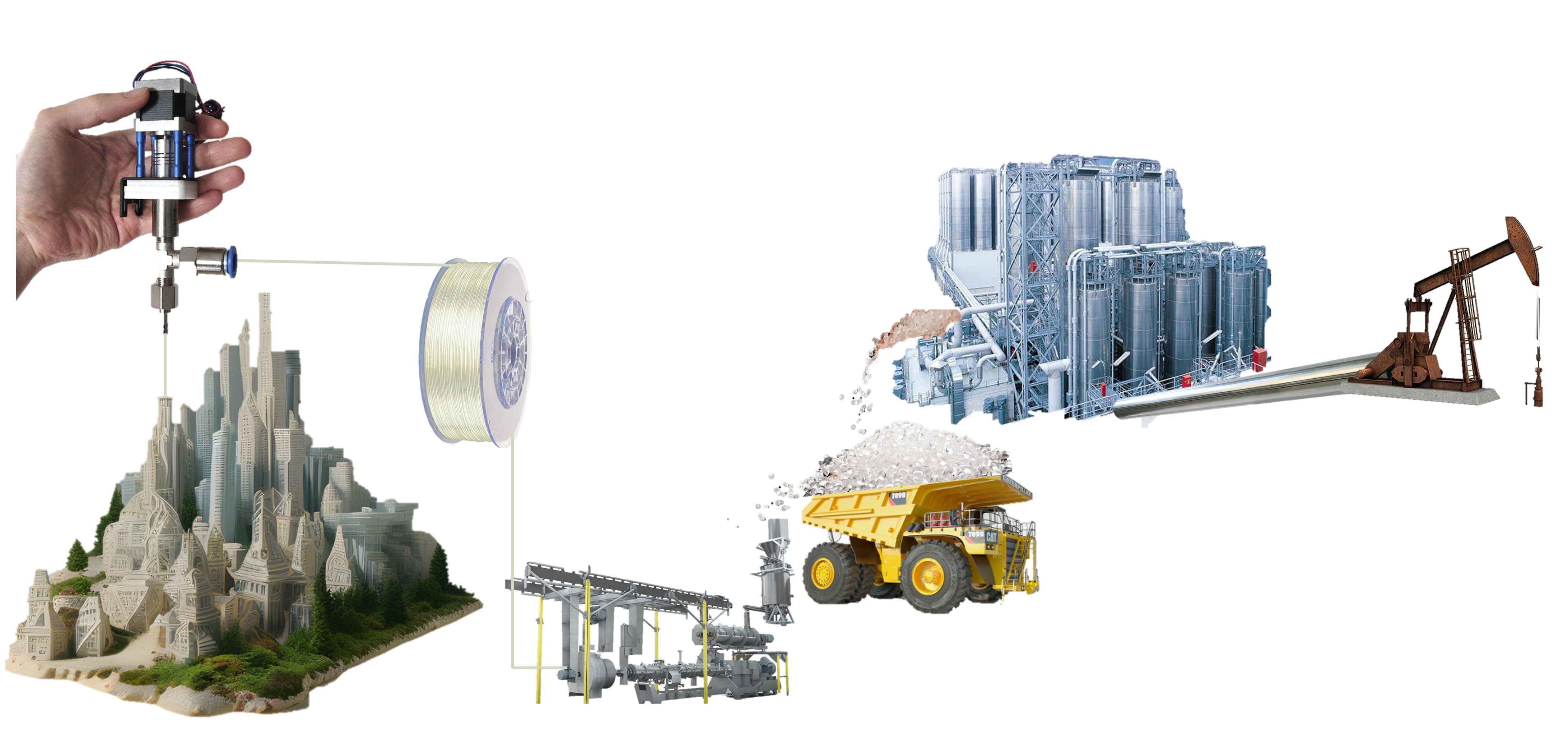Have you ever looked at a plastic toy or your M2 Materials filament and wondered how it was made? The answer lies in the intricate world of supply chains and chemical processes. One of the most popular plastics is ABS (Acrylonitrile Butadiene Styrene), which is widely used in the manufacturing of toys, automotive parts, and household items. In this article, we will take a deep dive into the supply chain and chemical process of making ABS plastic, including its price trends, major suppliers, and original sources.
What is ABS plastic?
ABS plastic is a thermoplastic polymer made from three monomers: Acrylonitrile, Butadiene, and Styrene. The combination of these monomers gives ABS plastic its unique properties, such as high impact resistance, good heat resistance, and excellent chemical resistance. ABS plastic is used in a wide range of applications, including automotive parts (including dashboards), toys, electronics, and household items.
Supply Chain
The supply chain for ABS plastic is complex and involves several stages. The first stage is the production of the three monomers: Acrylonitrile, Butadiene, and Styrene. These monomers are produced in large quantities by petrochemical companies, using fossil fuels as feedstock. The second stage is the polymerization of the three monomers to form the individual monomers. The individual monomers are compounded in an optimized ratio in the third stage, which is dependent on the intended application. Specialized polymer manufacturers are responsible for this process, producing plastic pellets that are then utilized by end-user manufacturers to create their products. At M2 Materials, we have successfully developed our own specialty ratio to synthesize ABS plastic with the highest tensile strength currently available in the market. Our goal was to create 3D-printed parts that are unmatched in quality and strength. Mission accomplished!
Price Trends
The price of ABS plastic has been volatile in recent years due to a variety of factors, including fluctuations in the price of crude oil and changes in demand from different industries. In 2020, the global ABS market was valued at $26.3 billion and is expected to reach $38.3 billion by 2027. Despite the volatility, ABS plastic remains a popular choice for manufacturers due to its unique properties and versatility.
Major Suppliers
The major suppliers of ABS plastic include LG Chem, Chi Mei Corporation, Ineos Styrolution, and Sabic. These companies are responsible for producing the majority of the ABS plastic used in the world today. LG Chem is the largest producer of ABS plastic, with a global market share of over 20%.
Original Sources
As previously mentioned, ABS plastic is made from three monomers that are produced using fossil fuels as a feedstock. This means that the original sources of ABS plastic are oil, gas, and coal. While efforts are being made to transition away from fossil fuels to more sustainable alternatives, the production of ABS plastic remains heavily reliant on these finite resources.
ABS plastic is a complex material that is used in a wide range of applications. Its supply chain is intricate and involves several stages, from the production of the three monomers to the polymerization of the plastic pellets. The price of ABS plastic has been volatile in recent years, but it remains a popular choice for manufacturers due to its unique properties and versatility. While efforts are being made to transition away from fossil fuels to more sustainable alternatives, the production of ABS plastic remains heavily reliant on these finite resources. So, the next time you look at a plastic toy, or your flawless M2 filament, you can appreciate the complex process that went into its creation.

